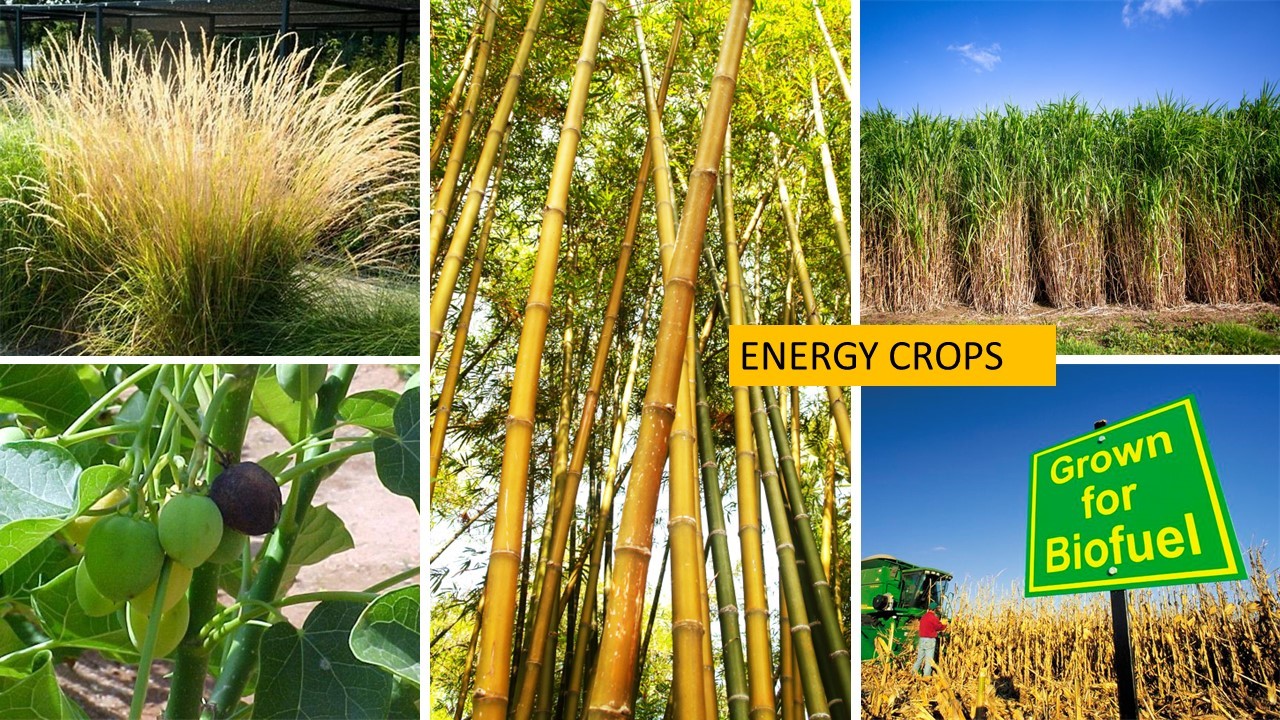
Energy Crops as a Fuel
ENERGY CROPS
Energy crops are crops grown specifically for the purpose of producing biofuels, biopower, or other forms of renewable energy. Unlike conventional crops, energy crops are grown primarily for their energy content rather than their food or fiber value. Energy crops are grown on marginal lands that are unsuitable for traditional agriculture, or as a rotation crop in conjunction with traditional crops.
The use of energy crops as a fuel has several advantages over traditional fossil fuels, including reduced greenhouse gas emissions, improved energy security, and rural development.
Here are some ways energy crops can be used as a fuel:
1. Biofuels: Energy crops can be converted into biofuels, such as biodiesel and ethanol, which can be used as a substitute for gasoline and diesel. Biofuels are renewable, and their production and use result in lower greenhouse gas emissions than fossil fuels.
2. Biopower: Energy crops can be used to produce electricity and heat through combustion or gasification. Biopower plants can be located close to energy crops, providing rural communities with access to reliable and affordable electricity.
3. Biogas: Energy crops can be used as a feedstock for the production of biogas, which is a renewable and versatile fuel. Biogas can be used as a substitute for natural gas for cooking, heating, and electricity generation.
4. Biomass pellets: Energy crops can be processed into biomass pellets, which can be used as a substitute for coal in power plants and heating systems. Biomass pellets are renewable, and their production and use result in lower greenhouse gas emissions than coal.
5. Solid biofuels: Energy crops can be used as a source of solid biofuels, such as wood chips and charcoal. Solid biofuels can be used for cooking, heating, and electricity generation in rural communities.
India's Potential
India has significant potential for the cultivation of energy crops due to its diverse agro-climatic zones and large agricultural land base. Energy crops can help meet the country's growing energy demand while reducing dependence on fossil fuels and promoting sustainable rural development.
Some potential energy crops for cultivation in India:
1. Sugarcane: Sugarcane is a widely cultivated crop in India, and its by-products, such as bagasse and molasses, can be used to produce biofuels and biopower. India is the world's second-largest producer of sugarcane, and the crop has significant potential for bioenergy production.
2. Jatropha: Jatropha is a tropical plant that produces oil-rich seeds that can be used to produce biodiesel. Jatropha is well-suited for cultivation on marginal lands and has the potential to provide income for small-scale farmers in India.
3. Bamboo: Bamboo is a fast-growing plant that can be used to produce bioenergy and other products such as paper and furniture. India has significant bamboo resources, and its cultivation can promote rural development while reducing dependence on fossil fuels.
4. Napier grass: Napier grass is a high-yielding perennial grass that is well-suited for bioenergy production. It can grow on marginal lands and requires minimal inputs, making it a suitable crop for small-scale farmers.
5. Castor bean: Castor bean is an oilseed crop that can be used to produce biodiesel. It is drought-tolerant and can grow on marginal lands, making it a suitable crop for cultivation in arid and semi-arid regions of India.
6. Pongamia: Pongamia is a tree species that is native to India and produces oil-rich seeds that can be used to produce biodiesel. It is well-suited for cultivation in tropical and sub-tropical regions of the country.
7. Coconut: Coconut is a widely cultivated crop in India, and its oil can be used to produce biodiesel. Coconut cultivation can provide livelihood opportunities for small-scale farmers and promote rural development.
8. Sweet sorghum: Sweet sorghum is a high-yielding crop that can be used to produce biofuels and biopower. It is well-suited for cultivation in semi-arid regions of India and can be grown as a second crop after the main food crop.
In conclusion, Energy crops can be used as a source of fuel in several forms, including biofuels, biopower, biogas, biomass pellets, and solid biofuels. The use of energy crops as a fuel can help reduce greenhouse gas emissions, improve energy security, and promote rural development.
India has a diverse range of energy crop species and significant potential for the cultivation of energy crops, which can help meet the country's growing energy demand while promoting rural development and reducing dependence on fossil fuels. However, energy crop production can also have negative environmental impacts, such as increased water use and competition for land with food crops. Therefore, it is important to carefully evaluate the potential environmental and social impacts of energy crop production before implementing large-scale cultivation.
--
1yThank you for new potential cultivation idea.
Manufacturing, Energy, Environment, and Sustainability; Chevening Fellow at Oxford -2023,
1yMakes a lot of sense
Software Engineer
1y#savesoil #savesoilmovement Conscious Planet Sadhguru JV #globalwarming #climatechange #WorldUnitesForSoil #innerengineering Action Now: http://savesoil.org Let us make it happen